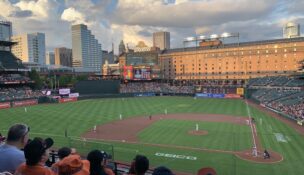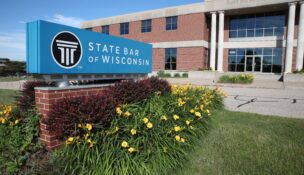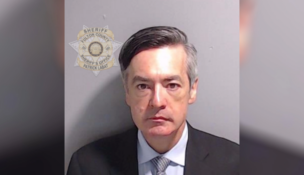COMMENTARY: Two trials, two verdicts in the Casey Anthony case
By: DOLAN MEDIA NEWSWIRES//August 1, 2011//
COMMENTARY: Two trials, two verdicts in the Casey Anthony case
By: DOLAN MEDIA NEWSWIRES//August 1, 2011//
By Richard Gabriel
Dolan Newswires
When Casey Anthony was unanimously acquitted earlier this month, a USA Today/Gallup poll showed that nearly two out of three Americans believed she was guilty of murder. How could the court of public opinion differ so drastically from the jury in an Orlando courtroom?
Every parent has experienced that moment of panic in a store or park when you can’t find your child. Those moments can seem like hours, and when your child is found, an unbelievable wave of relief washes over you.
With that universal experience, it is natural for most people to find Casey Anthony’s behavior after Caylee died inexplicable. It does not match our expectation of a panicked mother looking for her missing child or our image of a grief stricken parent coping with her child’s death.
Often when we do not understand the behavior of others, we convert our confusion to fear and anger. We simply do not want to believe that, in a just world, a senseless accident can take the life of an innocent child.
If we can blame someone, we can make sense of it. Then we don’t have to face the reality that the world can sometimes be random, dangerous and incomprehensible.
It is with that mindset that many Americans convicted Casey Anthony of murder – before the trial even started – using a civil trial’s standard of proof: More likely than not, she probably had something to do with the death of her child.
When I was retained to assist Casey Anthony’s defense in October 2008, the news coverage was already in high gear, with hours of airtime spent on the searches for the missing child, the candlelight vigils and resulting arrest of Casey.
Florida has one of the most liberal media access laws in the nation. Dubbed “The Sunshine Law,” the statute made all evidence exchanged between the prosecution and the defense a public document. That posed an extreme challenge for the defense. Of course, contained in the published discovery were documents, photographs and witnesses that a judge would later rule were inadmissible, irrelevant or prejudicial.
That created an advantage for prosecutors. In most urban jurisdictions, prosecutors already enjoy an 80- 90 percent conviction rate. They have more resources and a bigger budget than the average criminal defendant. (Most of the Casey Anthony defense team, including myself, contributed their time pro bono to the case.)
As part of the publicity in the Anthony case, Florida Attorney General Pam Bondi proclaimed on a national news show before the trial that the “evidence was overwhelming” of Casey’s guilt. With such strong charges, the media audience expects an immediate refutation from the defense with explanations of why the charges are false.
Thus, it is unsatisfying for the public to wait for the trial to hear the defense’s case. In a high profile case, that means the public usually gets only one side of the story before the trial: the prosecution version.
In looking at the negative media deluge in our case, I determined that there was simply no discernable gain from trying to turn the tide of public opinion. If anything, I hoped the negative publicity would reach a tipping point. I believed that the saturation was so great and the hyperbole so charged that the actual jury might experience a backlash effect: the more exposure a juror had to news stories in that case, the more suspicious jurors might be of the actual evidence at trial.
In fact, we saw this skepticism in a focus group we conducted prior to trial. In that group, jurors criticized the media for inflaming the case, making it difficult to distinguish the real evidence from the media hype.
Since press coverage often needs to create stories to satisfy the public’s hunger for a news item, I was also counting on the fact that the saturation would create an expectation that the prosecution would produce a “smoking gun” at trial.
Two juries, two verdicts
On May 9, Casey Anthony’s trial was set to start in front of a jury of millions of people who had spent almost three years with the case. The problem is that those millions were not qualified as jurors. Most had already pre-judged the defendant guilty, demonstrating a bias that would not allow them to be seated.
That is where the First Amendment creates a problem for the courts in the digital age. How could someone who had seen almost three years of news stories, discussed the case with friends and family and come to conclusions about the actual evidence be a fair and impartial juror?
The courts typically respond by asking potential jurors the impossible question: “Can you set those opinions aside and judge this case based on the evidence from the witness stand?”
Realistically, people who have invested that much time and emotion into a case cannot simply stop those impressions from influencing how they view the evidence. Psychologists call this confirmation bias: A person actively seeks out information that confirms what he or she already believes, while ignoring and dismissing information that does not conform to his or her belief.
With the pervasive publicity, both the prosecution and defense faced significant challenges in seating a jury. Since a jury was to be picked in another venue in Florida and imported to Orlando for the trial, we first had to find people who would be willing and able to leave their family and jobs for six to eight weeks and be sequestered in a hotel room with limited television and Internet access.
Second, we had to eliminate all of those jurors who had already made up their mind about the case. Third, we had to eliminate those people who would automatically vote for or against the death penalty without hearing additional evidence in the penalty phase. It is that last area that can be the most problematic issue for a defense team because research shows that the process of qualifying jurors for a death penalty case tends to seat a pro-prosecution jury.
In our profile of a desirable jury, we were not looking for men or women, young or old, black or white jurors. We wanted smart, skeptical, independent and self-aware jurors. We were seeking jurors who could separate their emotional responses from rational evaluations, who could follow the rule of law and turn a probing eye to what we felt were the prosecution’s “fantasy forensics” and facile motive.
Most importantly, we wanted jurors who were strong enough to ask hard questions and resist the public’s demand for a conviction unless they felt the prosecution had really proved its case.
After two weeks, the two juries were seated: 12 jurors and five alternates in the courtroom, and millions of “jurors” at home in front of their computers or televisions.
Each jury had a different set of rules. The jurors at home could talk about the case to each other, speculate, use evidence not allowed in court, freely use their emotions and proclaim the defendant’s guilt as often as they wanted.
The jurors in court were instructed they could do none of those things.
And there was one other enormous difference between these two juries: The one in the courtroom saw all of the evidence and witnesses. The one at home saw only an editorial selection of it.
On July 5, the 12 jurors in the courtroom found Casey Anthony not guilty of murdering her daughter.
The important independence of juries
Independent juries are the cornerstones of the justice system.
We trust that a group of 12 citizens, brave and true, working together to interpret the evidence and the law will use their independent judgment to arrive at a just verdict.
There is no formula, no predictable result. Each jury has its own way of piecing together the evidence in the case and applying the law. We rely on that individuality and independence as the hallmark of citizen juries.
It is important to listen to those jurors in the Casey Anthony case who have been willing to speak. The jurors in the courtroom saw a very different case than those at home. And ultimately, they comprised the only true jury in the case. They were there, every minute, every day for six and a half weeks.
The members of the jury all knew the verdict that the public overwhelmingly wanted and even expected. They were conscientious about their instructions and duty. While many may not agree with their verdict, I hope we can appreciate and respect the difficult and sometimes brave job a jury has to do in a case like this.
American justice is not “American Idol.” It cannot and must not be subject to a popular vote.
Real trials, like real life, are complicated, messy, sad, confusing and sometimes inexplicable. They do not fit into an hour-long news show or detective drama.
Trials are covered with increasing frequency these days. We must learn to balance the First Amendment demands of the press and the Sixth Amendment rights of a criminal defendant in order to ensure that justice is not a headline but a banner for our fundamental Constitutional rights.
Richard Gabriel is President of Decision Analysis, a national trial consulting company in Los Angeles. He is an author of “Jury Selection: Science and Strategy” and is President of the American Society of Trial Consultants Foundation.
Legal News
- Wisconsin joins Feds, dozens of states to hold airlines accountable for bad behavior
- Trump ahead of Biden in new Marquette poll
- Bankruptcy court approves Milwaukee Mariott Downtown ‘business as usual’ motion
- New Crime Gun Intelligence Center to launch in Chicago
- Arrest warrant issued for Minocqua Brewing owner who filed Lawsuit against Town of Minocqua
- Wisconsin Supreme Court justices question how much power Legislature should have
- Milwaukee’s Common Council now has the most African Americans, women and openly LGBTQ members ever
- Office of School Safety Provides Behavioral and Threat Assessment Management Training Ahead of 25th Anniversary of Columbine Shooting
- Wisconsin Supreme Court to hear arguments in Democratic governor’s suit against GOP-led Legislature
- Lawsuit asks Wisconsin Supreme Court to strike down governor’s 400-year veto
- Wisconsin man pleads not guilty to neglect in disappearance of boy
- ACS Selects University of Wisconsin Law School’s Miriam Seifter for 2024 Ruth Bader Ginsburg Scholar Award
WLJ People
- Power 30 Personal Injury Attorneys – Russell Nicolet
- Power 30 Personal Injury Attorneys – Benjamin Nicolet
- Power 30 Personal Injury Attorneys – Dustin T. Woehl
- Power 30 Personal Injury Attorneys – Katherine Metzger
- Power 30 Personal Injury Attorneys – Joseph Ryan
- Power 30 Personal Injury Attorneys – James M. Ryan
- Power 30 Personal Injury Attorneys – Dana Wachs
- Power 30 Personal Injury Attorneys – Mark L. Thomsen
- Power 30 Personal Injury Attorneys – Matthew Lein
- Power 30 Personal Injury Attorneys – Jeffrey A. Pitman
- Power 30 Personal Injury Attorneys – William Pemberton
- Power 30 Personal Injury Attorneys – Howard S. Sicula











